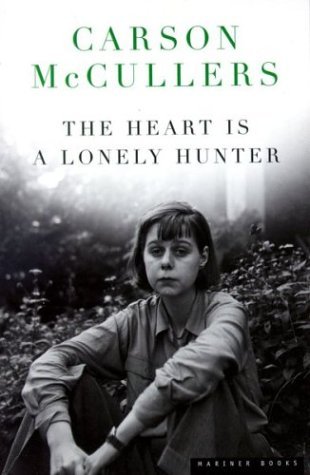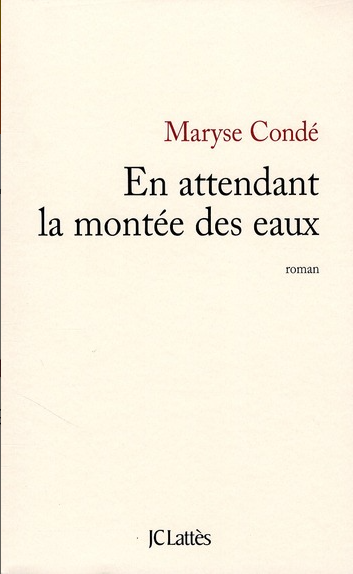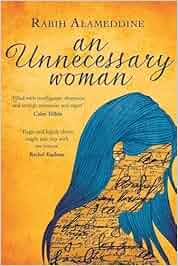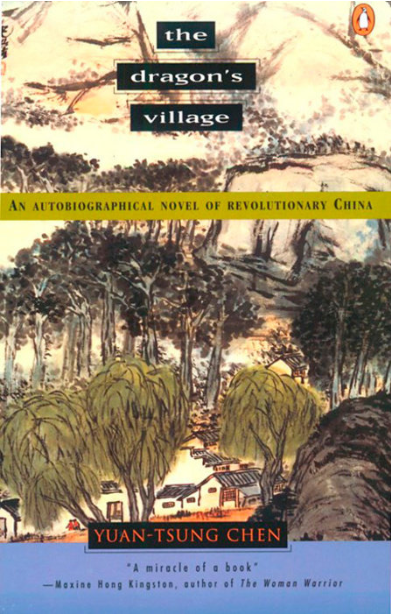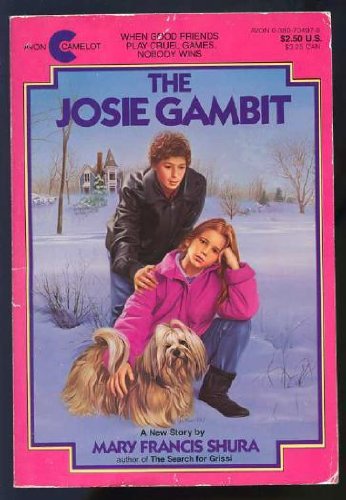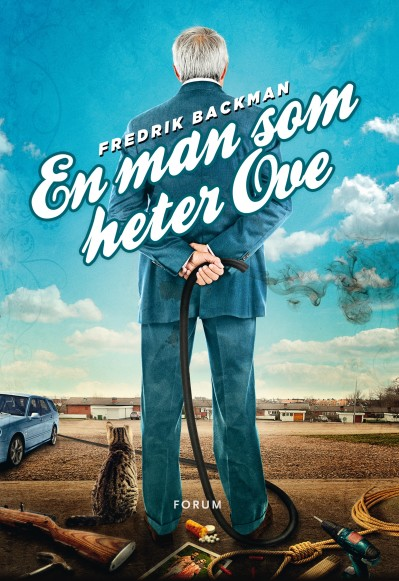As can be inferred from the sparse updates here, I haven’t finished many books lately. This is attributable to being busy with work but also the fact that the book I was most recently trying to get through was Maryse Condé‘s En attendant la montée des eaux. According to my check-out dates from the library, I started this one back in February. My tardy pace is no way any fault of Condé’s, since I was engrossed in her writing and the story from the beginning—it’s always the natural consequence of reading in French.
I first became aware of Condé through a short biography in one of Karavan’s 2024 issues following her death last April. Now and again the journal will include one of these retrospectives on the death of a particular favorite (of the magazine’s editorial staff? of the Swedish literati?), which is a handy if somewhat grim way for me to discover new authors. Stockholm library has a fairly wide offering of her books in the original French, so I could get started right away. I put Moi, Tituba sorcière… on my Storygraph TBR, but mostly as a placeholder for any Condé book. En attendant… happened to be the first and easiest one to find.
En attendant la montée des eaux follows obstetrician Babakar, a Malian now residing in Guadeloupe, in the chaos surrounding his surprise adoption of an orphaned infant. In the middle of a dark and stormy night, the young Movar appears on Babakar’s doorstep and asks him assist in an emergency birth. The child’s father is unknown, though presumed murdered back in Haiti; the mother, an undocumented Haitian migrant named Reinette, dies in childbirth before Babakar can do anything to save her. Still scarred by the loss of his beloved wife and their unborn child to political violence back in Africa, Babakar takes it upon himself to adopt the newborn and names her Anaïs. This act promptly throws his life into disarray: the native Guadeloupeans, who had never been fond of him but who take an even dimmer view of Haitian immigrants, slowly abandon his practice, while as far as the local Haitians are concerned Babakar has stolen one of their children. On top of this, Babakar’s closest confidante and only friend passes away shortly afterwards. It’s not surprising, then, that when Movar returns and demands that Babakar bring Anaïs to Haiti in accordance with the wishes of her dying mother, Babakar just shrugs his shoulders and decides, “why not?” Once in Haiti, Babakar quickly settles in with Movar’s family: his friend and mentor Fouad and two younger sisters, Jahina and Myriam.
This sets up the various stories, long and short, that take up the bulk of the book. This is really my only criticism, which isn’t really a criticism as such but more an observation: Anaïs is absent for most of the book, and when she does appear, Babakar doesn’t really seem to be parenting her all that much, no matter how much we are assured by the narration that she is the light of his life. This makes sense structurally, because the story of Babakar and Anaïs is the set dressing for bringing the ensemble cast together. At a rough estimate I would say that at least a third, maybe half, of En attendant... consists of flashbacks from Babakar as well as the various secondary characters: Movar, the Haitian migrant who had been desperately in love with Reinette and who had been the one to bring Babakar into things; Movar’s friend and mentor Fouad, a Palestinian chef and would-be poet exiled from Lebanon to Haiti; Reinette’s estranged sister Estrella; Estrella’s jilted lover Roji. Together they give Condé an excuse to present these different narratives alongside each other in one book. But this structure has a weird side effect where all of the present-day scenes involving Anaïs feel a bit like an afterthought.
I’m not alone in this sentiment, it seems. The first thing I do after finishing a book is to see what other people thought of it, not because I don’t have an opinion of my own but because it’s always gratifying to see someone validate your own take. Other times, a reviewer will level a particular piece of criticism that makes me stop and reflect on my own experience of the book: do I agree or disagree? In this case, a lot of other readers felt the story dragged. While I can understand why other people might feel that way, I personally didn’t. Perhaps this is in part a marketing issue, as the English summary of the book suggests a much more breathless, nail-biting story than what takes place:
Babakar is a doctor living alone, with only the memories of his childhood in Mali. In his dreams, he receives visits from his blue-eyed mother and his ex-lover Azelia, both now gone, as are the hopes and aspirations he’s carried with him since his arrival in Guadeloupe. Until, one day, the child Anaïs comes into his life, forcing him to abandon his solitude. Anaïs’s Haitian mother died in childbirth, leaving her daughter destitute―now Babakar is all she has, and he wants to offer this little girl a future. Together they fly to Haiti, a beautiful, mysterious island plagued by violence, government corruption, and rebellion. Once there, Babakar and his two friends, the Haitian Movar and the Palestinian Fouad, three different identities looking for a more compassionate world, begin a desperate search for Anaïs’s family.
“Desperate” is not quite the word I would use. Anaïs’s family consists solely of Estrella, who proves trivially easy to track down. To the extent any search in this story is desperate, it’s the living’s search for the dead: Movar’s search for Reinette, and then later Jahina and Myriam’s search for Movar. Desperation? Absolutely. Just not the kind advertised on the back of the book.
Likewise, a lot of people were put off by the seemingly relentless tragedy. Maybe the fact that I crawled through the book over the course of three months helped in this regard, as I never felt overwhelmed by all of the (and this is a technical term) bummer shit. Upon reflection, of course, I’d say that yeah, of course En attendant… is filled with a lot of bummer shit. It’s about colonialism, about neoliberalism, about power; you can’t tackle these subjects and keep everything sunshine and roses. Again, this might have been a case of false advertising, though more subtly: to my reading that English summary is making a promise that the story doesn’t really keep. I don’t know that Babakar, Movar, or Fouad would say that they were looking for a more compassionate world as such, and I don’t think they’ve found one by the end of the book, either.
But if it’s a book filled with tragedy, then Condé keeps a light enough touch throughout that (for me) it never comes across as relentless. I’m a cynical, jaded reader, and I consider myself highly sensitive (maybe even oversensitive) to even the slightest impression of tragedy wielded as a blunt tool of emotional manipulation. I’m not here for your teenage cancer patients and their romance, John Green, and I think it was tacky of you to write the book in the first place. In En attendant… the deaths and devastation are presented as plain facts of life, inevitable occurrences on a long enough timeline. In a brief aside, for example, Babakar has failed to save the miscarriage of a young teenage mother (fifteen years old, the book tells us). The mother is described as exhibiting both relief and a false display of mourning, but then Condé adds, off-handedly, that the girl’s relief would be short lived because not much later she would find herself pregnant again. In a single sentence, the enormity of this event is deflated and the whole thing becomes almost blasé.
This perspective is maybe a natural consequence of Condé’s narrative ambivalence. Not ideological ambivalence, to be clear: political violence and instability only leads to suffering, especially for those at the bottom. No one advocating for such is portrayed sympathetically, regardless of who they claim to represent. But narrative ambivalence in terms of what is fact and what is fiction, what is the true nature of events. While nothing in En attendant… is quite as drastic as in, say, “In a Bamboo Grove,” Condé often presents us with parallel narratives or interpretations of events that are so precisely weighed that either (or both) could be true. Babakar’s nightly visits from his mother are treated as factual events, but Haitian vodoun practitioners consistently fail to work any similar miracles for characters in the novel. Babakar unearths a variety of accounts of his wife’s death, all of which are unsatisfactory but all of which could equally be true. Fouad dreams of being a poet and subtly boasts about his natural talent, but we never read any of his work and only have Babakar’s thoroughly nonplussed response by which to judge Fouad’s work. Estrella’s account of herself and her life is not entirely incompatible with what we hear about her from Roji, even if in one story she’s the heroine and another the villain—and then she dies before we can learn more to judge for ourselves.
The Swedish translation from Helena Böhme was well done. There are brief conversations throughout the book in Creole, posing an extra problem to solve: even if the translator herself can decode them, how to present them to the reader? Böhme opted to keep the original and then present a Swedish translation in brackets, which I think is the optimal way to present both the difference between Creole and French (the class difference, the Self/Other difference) and the translated meaning. There’s also a list of Caribbean and West African terms at the back that Böhme chose not to render in Swedish at all. Some of them seemed simple enough that she could have included the explanation in the text, I thought, but others were more complex or abstract. The English translation is from Condé’s husband, Richard Philcox, and was longlisted for the 2021 National Book Award for Translated Literature. Even though I didn’t read it, I assume you’re in good hands there.

